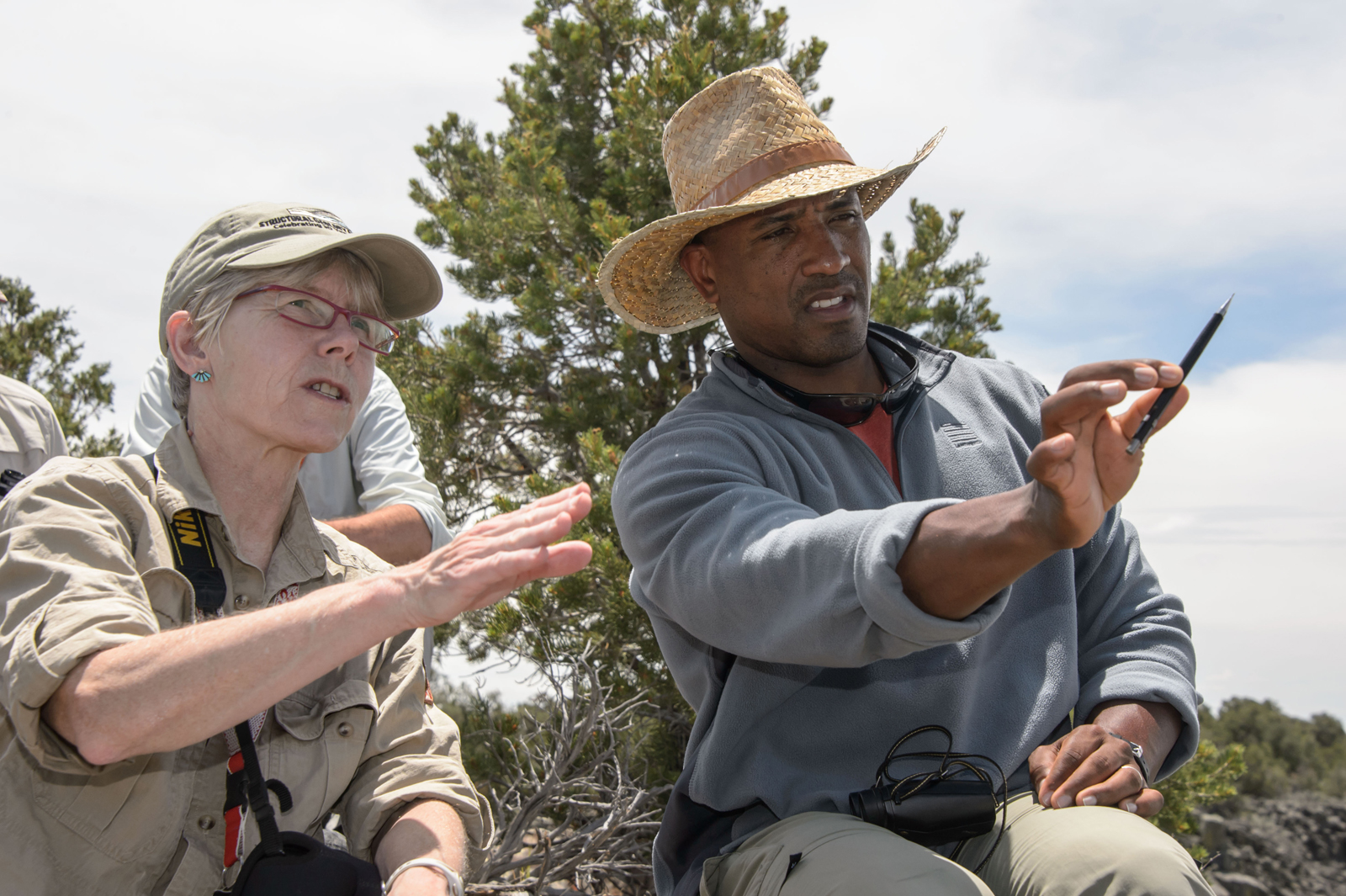
Professor of Geosciences Barbara Tewksbury was recently one of a small group of instructors involved in classroom and field training in geology for the new group of NASA astronauts selected in 2013. The instructors met the eight new astronauts in Houston for two weeks of classroom training in June, followed by a week of field mapping in July, during which the group camped and worked on the Taos Plateau in northern New Mexico. The geology training is a small part of the extensive two-year training that all newly selected astronaut candidates receive.
Because current missions take astronaut crews to the International Space Station (ISS) for several months on orbit, the geology training centered on preparing astronauts for Earth observations from the ISS. The theme of the training was “orbit to outcrop and outcrop to orbit.” The classroom training focused on geologic processes that could be recognized and interpreted in orbital imagery. In class, the astronauts used orbital imagery of the New Mexico field area to make preliminary geologic maps and interpretations of processes and geologic history that they would use to focus their field work in July. In the field, they used field observations and data to refine their maps and interpretations, driving home the point that outcrop level observations are critical to building a complete picture.
The biggest challenge in the training was the short length of time available in the classroom. Tewksbury was responsible for the background section on structural geology and half the section on plate tectonics, topics that she has taught entire semester courses on at Hamilton. All of the instructors faced the same constraints in their disciplines so the training had to be tightly focused not only on what would be useful to astronauts in the ISS but also specifically what would prepare the astronauts for field work in New Mexico.
Tewksbury was impressed with what the astronauts were able to do in the field with a limited background and vocabulary from the two weeks of classroom training. She remarked, “They are keen observers and really good critical thinkers. Their final maps and oral briefings were as good as those I’ve seen from undergraduate geology majors on similar topics.”
Tewksbury became involved with geology training at NASA just before the 2009 astronaut class was selected. Previous geology training needed to be redesigned for a number of reasons, and Tewksbury was asked to join the team because of her national reputation in innovative course design. She helped partly redesign the training for the 2009 class and then completely redesign the summer classroom and field training for the 2013 class.
One of Tewksbury’s former astronaut “students” from the 2009 class, Reid Wiseman, is a member of ISS Expedition 41 and completed two successful space walks in October.
Tewksbury has worked on other projects for NASA as well. In 2010 and 2011, she was part of the science team for the Desert Research and Technology Studies field tests of NASA’s Space Exploration Vehicle. For that work, she received the NASA Group Achievement Award and the Steely-eyed Missile Woman Award.
